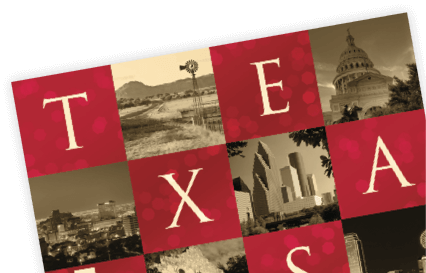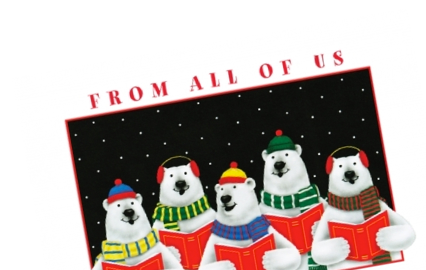Sep 16th 2024
Benefits of Sending Employee Thanksgiving Cards: Boosting Morale and Loyalty
Businesses often overlook the impact of gratitude, but a thoughtful Thanksgiving card can make a meaningful connection. It stands out amidst the usual holiday greetings, making employees feel valued and recognized.
Taking the time to send a personalized message of thanks can also enhance loyalty and job satisfaction. Employees who feel appreciated are more likely to stay committed to their roles and contribute positively to the company culture.
Importance of Employee Recognition
Recognizing employees is crucial for maintaining a positive work environment. It supports mental well-being, fosters loyalty, and encourages high performance.
Boosting Morale and Motivation
Recognizing employees boosts their morale and motivation. When an employee feels valued, they are more likely to be happy with their job. This happiness can lead to improved job performance and productivity.
Simple acts of appreciation, like sending Thanksgiving cards, can uplift employees' spirits. Personal messages or thank-you notes can make them feel special and appreciated.
Recognizing efforts through awards or public acknowledgments can further motivate employees. They often work harder when they believe their efforts are noticed. This creates a positive feedback loop where appreciation leads to better work, which, in turn, gains more appreciation.
Improving Company Culture
A culture of recognition fosters a positive work environment. When employees feel appreciated, they are more likely to show mutual respect and cooperation. This enhances team spirit and camaraderie.
Sending Thanksgiving cards is a simple yet effective way to show that the company values its employees. Personalized messages can make employees feel individually valued, elevating the organizational culture.
A strong culture of recognition can also make the workplace more inclusive. Employees from various backgrounds feel respected and valued. This can help in reducing conflicts and improving overall employee satisfaction. Establishing regular recognition practices helps create a supportive and welcoming atmosphere.
Enhancing Employee Retention
Recognition plays a significant role in retaining employees. High employee turnover can be costly and disruptive. When employees feel valued, they are more likely to stay with the company.
Simple gestures like Thanksgiving cards show that the company cares about its employees. This can be a deciding factor for employees contemplating long-term engagement with the company.
Happy employees are less likely to look for other job opportunities. They feel a sense of belonging and loyalty. Continuous recognition can build this loyalty over time. This can significantly reduce hiring and training costs, contributing to the company's long-term success.
Recognizing employees consistently can create a more stable and committed workforce. It directly impacts the company's growth and sustainability.
Benefits of Sending Thanksgiving Cards
Sending Thanksgiving cards to employees can make corporate communication more personal, highlight appreciation beyond typical rewards, and foster a workplace environment centered on gratitude.
Personal Touch in Corporate Communications
Sending a Thanksgiving card adds a personal touch to corporate communication. Employees often receive standard emails and memos, which can feel impersonal. A thoughtfully crafted card stands out and can make employees feel recognized on a personal level.
Including a handwritten note shows extra effort, making the gesture even more meaningful. This can create a stronger bond between company leaders and staff, leading to a more engaged workforce.
Showing Appreciation beyond Standard Rewards
While bonuses and awards are great, sometimes a simple “thank you” can go further.
Thanksgiving cards are cost-effective but impactful ways to show employees they are valued. This form of appreciation can reach employees who may not always be in the spotlight but contribute significantly to the company’s success.
Remembering all employees in this manner promotes a sense of inclusion and boosts morale across the board.
Encouraging a Gratitude-Focused Environment
Encouraging gratitude within the workplace can lead to numerous benefits. When leaders show appreciation, it sets a precedent for employees to do the same among their peers.
This practice can enhance teamwork and create a supportive work culture. Gratitude has also been linked to improved mental health, which can result in higher productivity and job satisfaction.
Promoting a gratitude-focused environment through simple gestures like Thanksgiving cards can have a lasting positive impact on the company culture.
Strategies for Implementing Thanksgiving Card Programs
Implementing a Thanksgiving card program can foster employee engagement and express gratitude. Key strategies include personalization and choosing the right time for distribution.
Personalization and Customization Tips
Personalized cards show employees that they are valued as individuals. Using employees' names and mentioning specific achievements can make the message more impactful.
A handwritten note adds a personal touch, making the card feel more genuine and heartfelt.
Customization can also involve choosing card designs that reflect the company’s branding or values. Including a unique message tailored to the company culture can enhance the overall feel of appreciation. Digital platforms can help send personalized e-cards if physical cards aren't feasible.
Incorporating company logos and specific colors can make the cards more professional. It's essential to be sincere and avoid generic messages to make employees feel truly appreciated.
Timing and Distribution
Timing is crucial for Thanksgiving cards to have the desired impact. Sending cards too early might make them seem irrelevant, while sending them too late can miss the holiday spirit.
Ideal timing is usually one to two weeks before Thanksgiving Day to ensure they arrive well before the holiday.
For distribution, consider both physical and digital methods. Physical cards can be handed out during company events or mailed to home addresses. Digital cards offer a quick and eco-friendly alternative.
Ensuring consistent delivery methods, especially for remote employees, helps maintain inclusivity. Organizing a team event to distribute cards can also create a sense of community and enhance employee morale.
Impact on Employee Engagement
Sending Thanksgiving cards to employees can greatly boost their overall engagement, showing them that they are valued and appreciated. This practice encourages a positive work environment and fosters loyalty.
Direct Effect on Engagement Levels
Sending Thanksgiving cards directly impacts engagement levels by making employees feel recognized and appreciated. When employees receive a card, it reinforces their sense of belonging and importance within the company.
Feeling appreciated encourages them to be more motivated, as they feel their hard work is acknowledged.
A simple card can strengthen relationships between management and staff. It opens the lines of communication and creates a channel for expressing gratitude.
Long-Term Engagement Through Consistent Practices
Consistently sending Thanksgiving cards each year helps build long-term engagement. This practice, when repeated annually, embeds a culture of appreciation within the company.
When employees see this as a recurring gesture, they understand that their contributions are valued year-round.
Consistent appreciation efforts help in fostering a loyal workforce. Employees are more likely to stay with a company that regularly shows it cares. Regular acts of appreciation create a supportive environment that enhances overall job satisfaction.
Considerations for Multicultural Workplaces
When sending Thanksgiving cards in a multicultural workplace, it's essential to acknowledge diverse cultural backgrounds and provide inclusive options that resonate with all employees.
Inclusivity in Celebrating Thanksgiving
Thanksgiving is not universally celebrated, so it's crucial to include everyone. Leaders should acknowledge that some employees may not observe Thanksgiving, instead taking into account holidays that are significant to them.
For instance, some employees might celebrate Diwali or Rosh Hashanah instead of Thanksgiving. Recognizing these holidays can foster a sense of inclusion.
A flexible approach, such as opting for "gratitude cards" rather than Thanksgiving-specific cards, can show sensitivity to cultural differences.
By recognizing various holidays, companies can demonstrate their commitment to cultural inclusivity, making all employees feel respected and valued.
Alternative Approaches for Diverse Teams
One effective way to honor cultural diversity is by hosting events that celebrate multiple holidays. For example, organize a luncheon where employees bring a dish significant to their cultural traditions.
This not only respects their differing backgrounds but also allows everyone to share and learn about each other's customs.
Another approach is to offer flexible time off, letting employees choose which holidays they wish to observe. Platforms like Spotify have implemented such policies, giving employees the freedom to allocate their days off, enhancing morale and inclusivity.
Considering individual preferences and adjusting traditional practices can help create an environment of respect and appreciation for all cultural backgrounds.
Leveraging Thanksgiving Cards for Team Building
Thanksgiving cards can be a powerful tool to enhance team cohesion and foster a positive work environment. By personalizing the cards and involving employees in the card creation process, companies can strengthen relationships and encourage teamwork.
Fostering Interpersonal Relationships among Colleagues
When employees receive personalized Thanksgiving cards, it shows appreciation and recognition. This gesture helps in building trust and mutual respect among team members.
It encourages employees to acknowledge each other's contributions, making everyone feel valued and important.
Personal notes in these cards can highlight specific achievements or qualities, reinforcing positive behaviors. This creates a sense of camaraderie and belonging.
In a workplace where employees feel appreciated, they are more likely to collaborate effectively and support each other.
Thanksgiving cards also bridge the gap between different departments. They offer a chance for employees who might not interact regularly to connect. This promotes a more unified company culture where everyone feels included.
Collaborative Card Creation and Exchange Activities
Getting employees involved in the creation of Thanksgiving cards can be a fun, team-building exercise.
Teams can work together to design and craft cards, fostering creativity and collaboration. This activity helps break down silos and encourages communication among team members.
Employees can form small groups to brainstorm messages and designs. Working together on a shared project can strengthen relationships and boost morale. It provides an opportunity for team members to learn more about each other's strengths and talents.
Additionally, organizing a card exchange event allows employees to share their appreciation directly. This exchange can be done during a team meeting or a special event, making it a memorable and meaningful experience for everyone involved.
Assessing the Effectiveness of Thanksgiving Cards
Evaluating the success of sending Thanksgiving cards involves gathering employee sentiment and assessing performance metrics. These steps help determine if the initiative benefits the company.
Measuring Sentiment and Feedback
To assess employee sentiment, companies can use surveys and feedback forms. These tools can gather data on how employees feel about receiving Thanksgiving cards. Look for positive comments or suggestions for improvement. Anonymous feedback often yields the most honest responses.
Focus groups can also offer deep insights. Arrange small discussion groups to talk about the cards and their impact. Listening to direct feedback can reveal any emotional or motivational effects.
Digital tracking tools can measure engagement. Emails or intranet posts related to the cards can show how many people read or clicked on them. This data can indicate the overall interest.
Analyzing Impact on Performance Indicators
Measuring performance indicators like productivity and engagement can show the cards' effectiveness. Compare metrics before and after distributing the cards. Increased productivity or lower absenteeism can suggest a positive impact.
Look at employee retention rates. Improved morale from receiving cards may lead to higher retention. Compare retention data with the previous years to see if there's an upward trend.
Customer feedback can also be telling if customers notice a happier or more engaged employee. Monitor customer satisfaction scores before and after the Thanksgiving season for indirect effects.
Using these methods can provide a comprehensive view of how Thanksgiving cards impact the workplace. Accurate and actionable insights are the goal.
Frequently Asked Questions
Sending Thanksgiving cards can offer numerous benefits, including boosted morale, improved workplace culture, and supporting employee recognition strategies.
What are the advantages of giving Thanksgiving cards to employees?
Giving Thanksgiving cards shows genuine appreciation and can make employees feel valued. This simple gesture can build stronger connections and foster a sense of loyalty.
How can sending Thanksgiving cards impact employee morale?
Receiving a thoughtful Thanksgiving card can significantly boost morale. It shows employees that their hard work is recognized and appreciated, which can lead to increased job satisfaction and motivation.
In what ways do Thanksgiving cards from employers affect workplace culture?
Thanksgiving cards can positively influence workplace culture by promoting a sense of community and belonging. They help create a supportive and appreciative environment where employees feel cherished.
What are the best practices for creating meaningful Thanksgiving cards for staff?
Personalize each card with the employee’s name and a specific message of appreciation. A handwritten note can add an extra touch of sincerity. Make sure the message is heartfelt and genuine.
How often should employers send out holiday cards to employees?
While Thanksgiving cards are a great starting point, consider sending holiday cards for occasions like Christmas or Employee Appreciation Day to keep the recognition consistent throughout the year.
Can Thanksgiving cards contribute to employee recognition and appreciation strategies?
Yes. Thanksgiving cards can be an effective part of a broader recognition strategy. They complement other methods of appreciation, such as awards and public recognition. This helps create a well-rounded approach to celebrating employee achievements.


 Business
Business
 Personalized
Personalized
 Holiday
Holiday
 Customer
Customer
 Bulk
Bulk
 Birthday
Birthday
 Thank You
Thank You
 Anniversary
Anniversary
 Sympathy
Sympathy
 Retirement
Retirement
 Christmas
Christmas
 Thanksgiving
Thanksgiving
 New Year
New Year
 Hanukkah
Hanukkah
 Rosh Hashanah
Rosh Hashanah
 Appreciation
Appreciation Merry Christmas
Merry Christmas Happy Holidays
Happy Holidays Seasons Greetings
Seasons Greetings Funny Cards
Funny Cards Religious
Religious Peace
Peace Patriotic
Patriotic Accounting
Accounting Finance
Finance Photo Cards
Photo Cards Foil Cards
Foil Cards Laser Cut Cards
Laser Cut Cards Die Cut Cards
Die Cut Cards Front Imprint
Front Imprint Recycled Cards
Recycled Cards New York
New York San Francisco
San Francisco Chicago
Chicago Los Angeles
Los Angeles Houston
Houston By Animal
By Animal Christmas Tree
Christmas Tree Western/Southwestern
Western/Southwestern Tropical/Beach
Tropical/Beach Winter Scenes
Winter Scenes Budget Cards
Budget Cards Legal
Legal Construction
Construction Real Estate
Real Estate Trucking
Trucking Accounting
Accounting Holiday Phrases
Holiday Phrases







 Fully Custom
Fully Custom  Friendly
Friendly A portion of every card purchased is donated to charity.
A portion of every card purchased is donated to charity.
 Proudly Made
Proudly Made